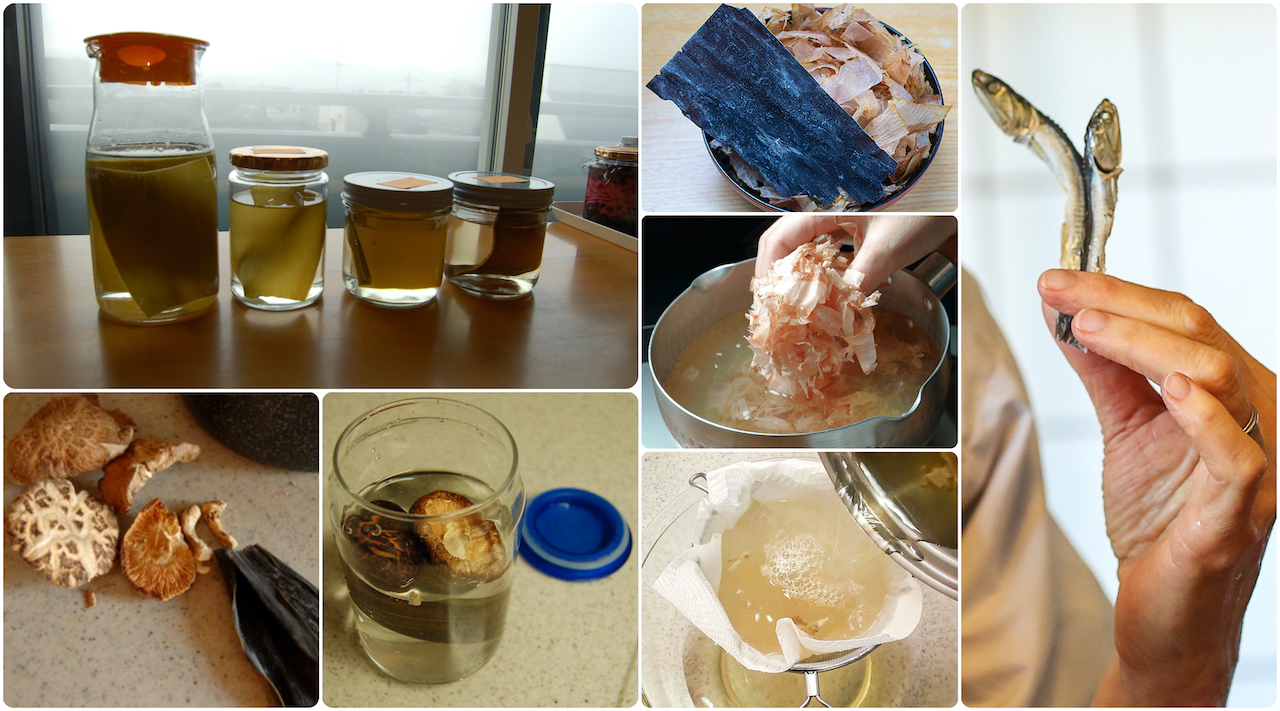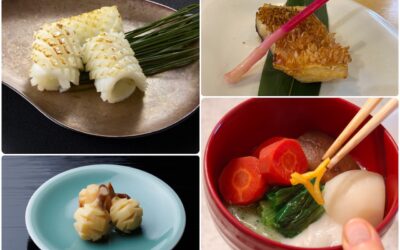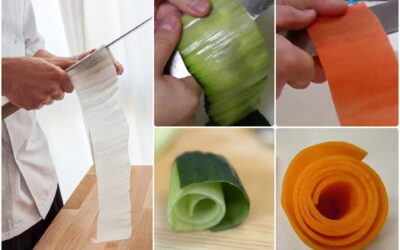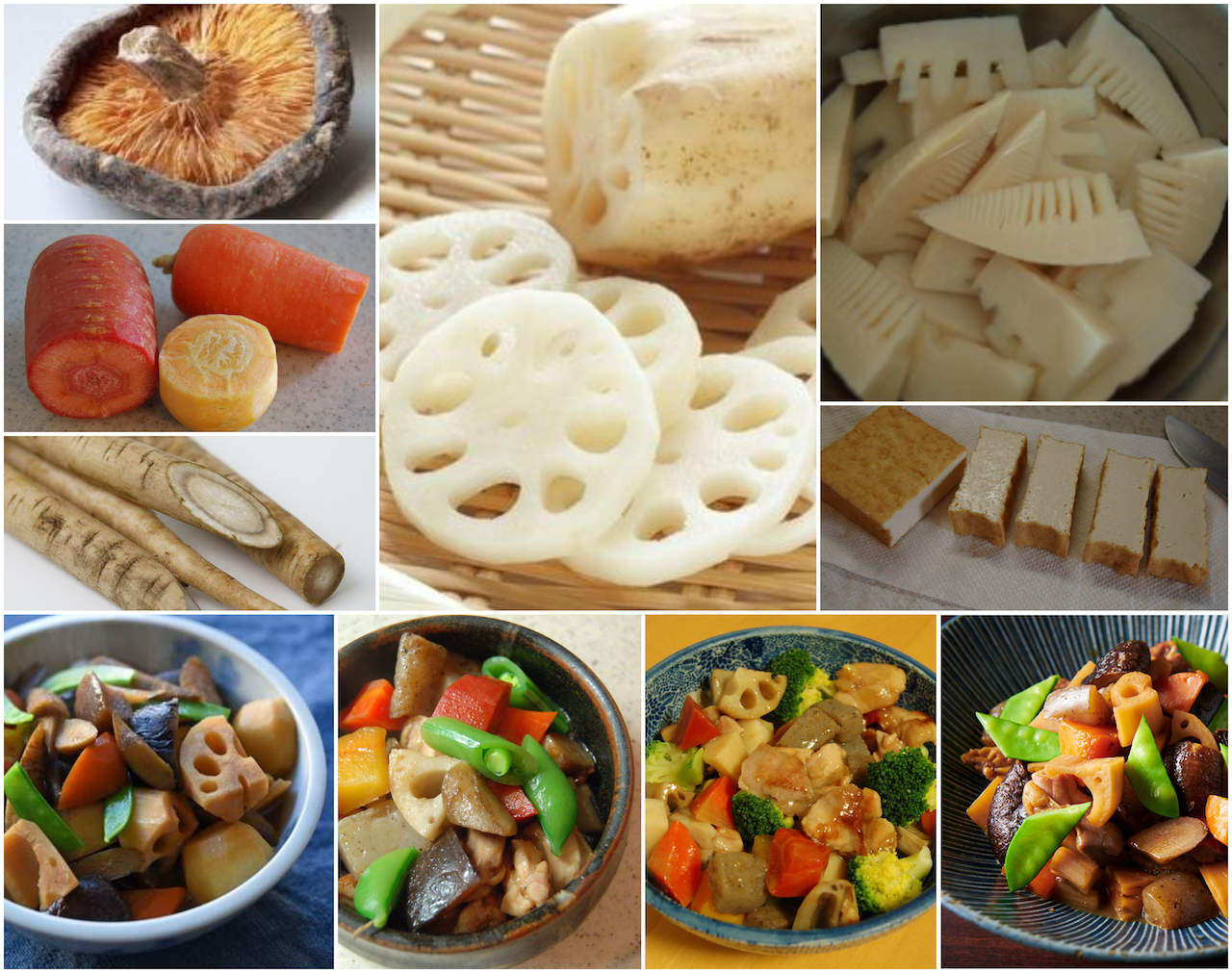
筑前煮 ・Chikuzen Ni
This Kitchen PROJECT is about making CHIKUZEN NI (soy-braised vegetables in the Fukuoka style) in YOUR kitchen.
A cross between a stir-fry and a stew, this dish no doubt has as many variations as there are households in Fukuoka. The BASIC RECIPE I offer includes two versions: CLASSIC (made with chicken) and VEGAN (made with thick fried tōfu). Use these as a point of departure for developing your own house version of Chikuzen Ni.
Scroll down for several BROTH OPTIONS.
All sorts of root vegetables and tubers are welcome in this dish; choose according to seasonal availability in your region of the world. Gobō, bamboo shoots, and lotus roots are commonly added. To make the dish colorful, carrots and some green vegetable are typically included. Dark shiitaké mushrooms are often added to deepen flavor and provide a dark color contrast.
The flavor profile of this dish is a simple dashi broth with a sweet-and-salty soy taste. Strong or spicy flavorings such as mustard, miso, sanshō, yuzu koshō or shichimi tōgarashi are not used.
Pictured above are four Examples of Chikuzen Ni. The center two include chicken, the one on the left and right are VEGAN.
Root vegetables such as lotus root, carrots and burdock root (gobō) are common additions. In the spring when fresh bamboo shoots are available they are often featured. Mushrooms (often hoshi shiitaké that also create flavorful broth as they are softened) and some green vegetable (peas, broccoli, édamamé) are included. Konnyaku is typically used, too.
VEGAN versions include tōfu in some form, most often thick fried tōfu(atsu agé).
Curious about how lotus root is grown? Take a look the Chikuzen Ni Kitchen Culture blog post and my February 2022 newsletter.
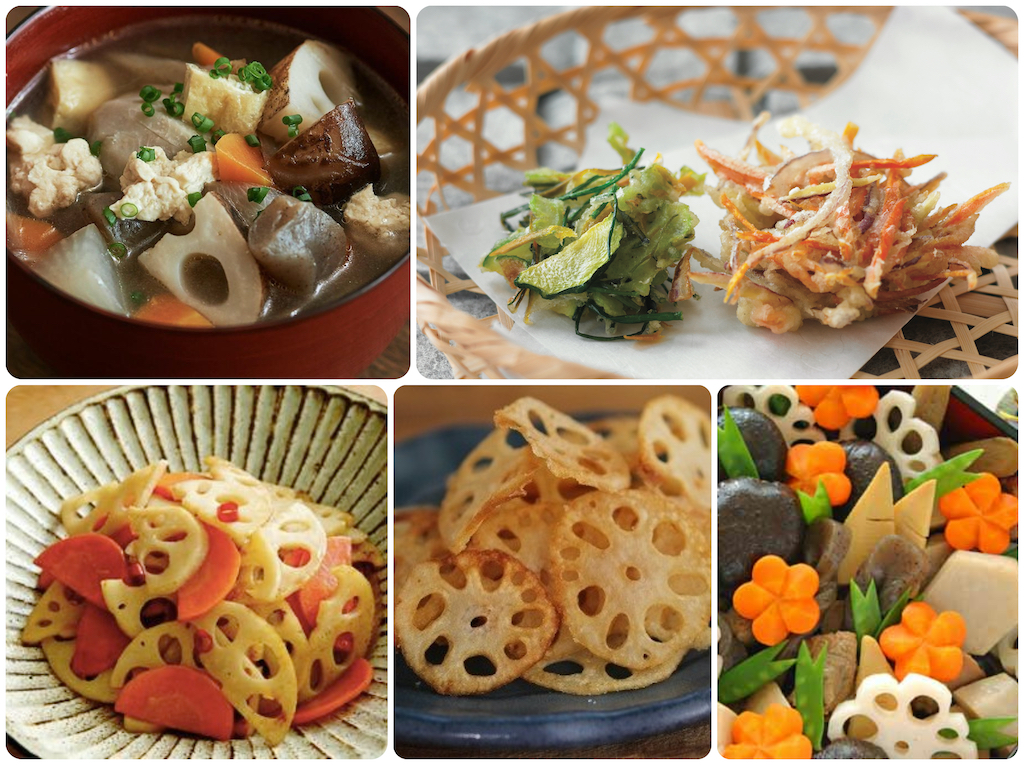
Looking for suggestions for other dishes that could be made with lotus root?
In WASHOKU: Burdock and Lotus Root Chips (page 213), Sweet-and-Sour Lotus Root (page 222)
In KANSHA: Lotus Root Dumpling Soup (page 78-79), added to Good Fortune Bags (page 180), added to Heaven-and-Earth Tempura Pancakes (page 109), added to Good Fortune PIckles (page 207)
Archived on this website: Chunky Chowder (Kenchin-Jiru), Soy-Simmered Root Vegetables and Shiitaké (Nishimé) and Kimpira
Simple vegan broths can be made using either Kelp Alone Stock or a mushroom-enriched version called Sankai Dashi (literally Mountain-Sea Stock). Using several varieties of kombu will add depth and complexity of flavor to your noodle soup.
Stocks using fish such as Standard Sea Stock (and Smoky Sea Stock) and Sanuki Sea Stock (made with iriko or niboshi dried sardines) are the most commonly encountered.
